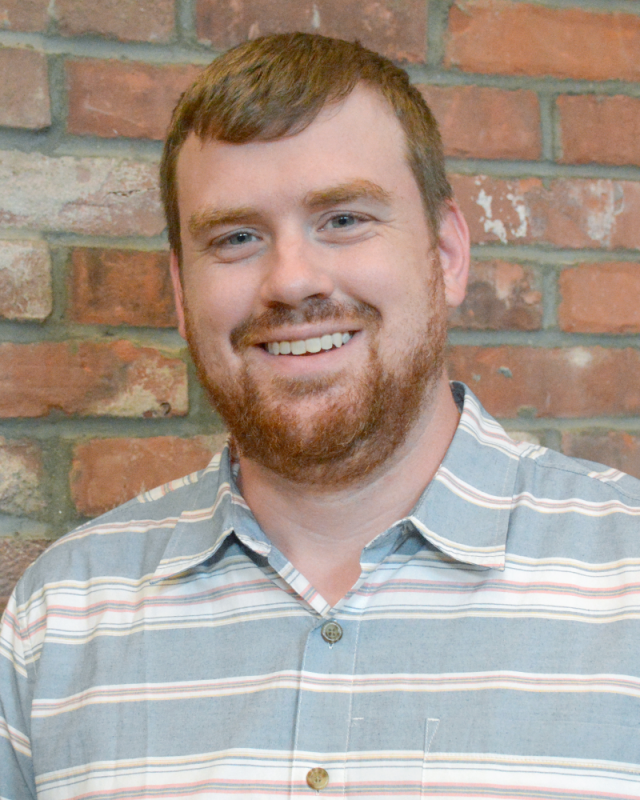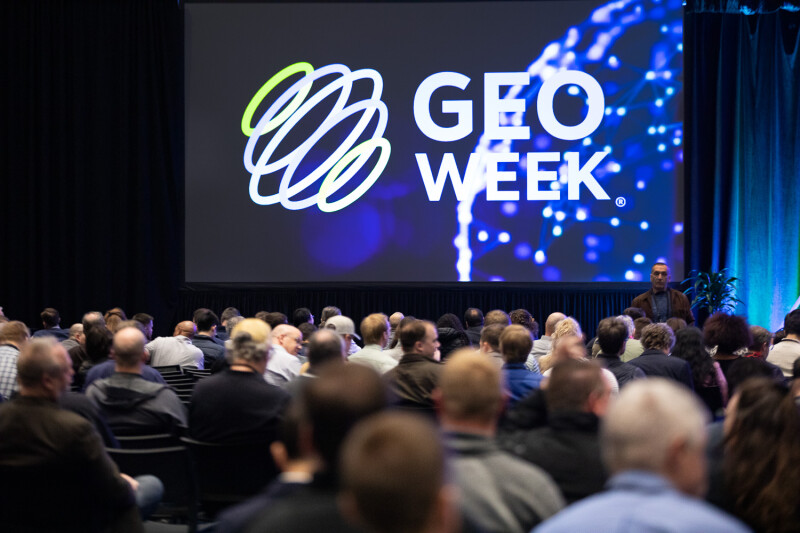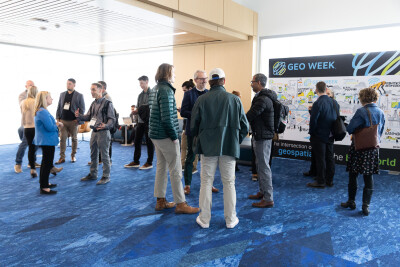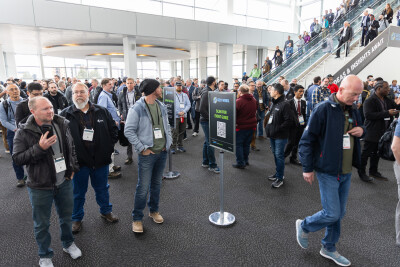Last week in Denver, Colorado, over 3000 professionals from various parts of the geospatial, AEC, and infrastructure industries came together for the annual Geo Week conference and exhibition, a three-day event featuring a packed conference program and buzzing exhibit hall floor. While there is so much going on for all three days of the event, it still always seems to fly by, with the event-opening product previews and day three final session feeling as though it’s separated by mere hours rather than days.
In those three days, though, one can see and hear a little bit of everything, from high-level discussions about where the industry is today and where it is going, to in-the-weeds details about how specific projects were completed, and everything in between. Our team from Geo Week News covered many of the angles from the conference extensively, and will continue to do so in the coming days and weeks; you can find our coverage to this point here.
Today, though, I want to take a step back and focus less on some of the specific sessions and conversations I had throughout the week, and more on some of the overarching themes. It’s easy to get lost in the weeds after a big event like what was just held in Denver, but it’s always valuable to take a step back and focus on the bigger takeaways that can carry over through the rest of the year. With that in mind, here are my three biggest takeaways from Geo Week 2025.
It’s About the Technology, but also the People
At its heart, Geo Week is a technology show, with companies and professionals really gathering together to talk about the newest tools they are using in their workflows and what they are still lacking, whether it be on the hardware or software side. Despite that, this year more than ever before it seemed like the people doing the work – and all the people – were at the center of conversations.
Take, for example, the two keynote presentations, one around the digital transformation of DFW International Airport and the other about the response to the Francis Scott Key Bridge collapse. Both presentations were nominally about the different tools and technologies used in these cases, but ultimately it came down to people working together and that collaboration unlocking the true potential of the technologies. A significant portion of the latter presentation, for example, was devoted to how many agencies were working together smoothly without a true “leader” at the helm.

That theme shone through the rest of the show as well. One of the major topics discussed both on the floor and throughout the conference program was the modernization of the National Spatial Reference System, a significant project nearing its completion by the National Geodetic Survey (NGS). Those involved in this work mentioned numerous times that NGS can only do so much, but really it's about different professional organizations and practitioners coming together to really find the value and spread the word throughout the community. In another presentation, Pete Kelsey detailed a project for scanning Alcatraz, complete with astonishing data and models. Even in that kind of presentation, what really shone through was the amount of help he received from others and how those people were the true story.
It’s not uncommon to hear, amid conversations about technology, that people are still at the center. While I don’t believe people are being disingenuous when they say it, often it comes across as obligatory more than genuine. That didn’t feel like the case this past week. Technology is of course changing the geospatial industry on what feels like a daily basis, and the tools that are coming out are astonishing. But none of the work is possible without the people, and the collaboration across organizations, teams, and disciplines. That was the number one theme of Geo Week 2025.
Cultivating the Workforce
We'll stick with the people-focused theme with takeaway number two as well, but look at it from a different perspective: The workforce. This is inevitably going to be a big point of discussion at a conference like this, which brings together professionals from surveying, construction, and engineering – all fields that are dealing with some form of workforce shortages. The question everyone has is: How do we attract the next wave of workers?
This was a major theme of conversations throughout the week, both on the conference program and walking around the exhibit hall floor. There was a session on the first day, for example, that featured insights from those within the industry dealing with this very issue that gave practical strategies for how to attract young talent.
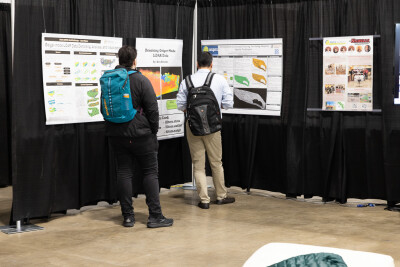
That young talent was also at the show itself. On the exhibit hall floor, there was a section dedicated to posters from university researchers representing that next generation of geospatial leaders from places like the University of Florida, Purdue, Nicholls State University, and more. Rami Tamimi was also at the show with a few students from his creation, The Survey School, to help them be introduced to potential employers and leaders in the industry. Geo Week News also spoke with representatives from Oregon State University about this issue and how different institutions can come together to tackle this growing issue.
Even beyond the future workforce piece, there was also plenty of conversation about training the current workforce for a changing landscape. Different presenters throughout the week talked about learning to use new tools and staying ahead not only to get the best work to their clients, but also to stay ahead of their competition. Companies like Global eTraining were also on hand with a specific focus on keeping AEC professionals up-to-date in a quickly changing field.
Start with the Use Case
As we noted above, at its heart Geo Week is still a technology show, so we should talk about the technology a bit more with this last takeaway. However, even here it’s not any specific technology, as no one tool really stood out above the others at this year’s event. Instead, there was a lot of talk about choosing the right tool for the job. One of the most important developments of the last few years in this industry has been the release of so many different tools that can accomplish different things finally “playing nice” together, at least to some extent. But now, it can be difficult to know where to start.
Throughout this week, this was a crucial question we heard asked many times over, and the answer was always some variation of the same response: Start with your use case. It’s simple on its face but can be harder to put into practice when there are so many cutting-edge tools at your disposal. If you know what you’re trying to accomplish first, it can be easier to find the right tool – at the right price point – that will get you to the deliverable.
Going back to that opening day keynote about DFW Airport, that was one of the messages that rang through the loudest. The presentation was about the airport’s incredible digital transformation, and zooming out there were so many incredible, cutting-edge technologies that were truly mind-blowing. But as they explained throughout, none of these tools were chosen just for the sake of adding a new technology. Everything was in search of a solution to a problem, with the process of starting with the problem rather than the solution.
It can be overwhelming to be getting started in this field with all of the tools available. Hearing all week at Geo Week, from some of the leaders in the industry, about simplifying the process and focusing only on what is needed, and not on what seems to be the most cutting-edge, is certainly a way to breathe a little easier.

